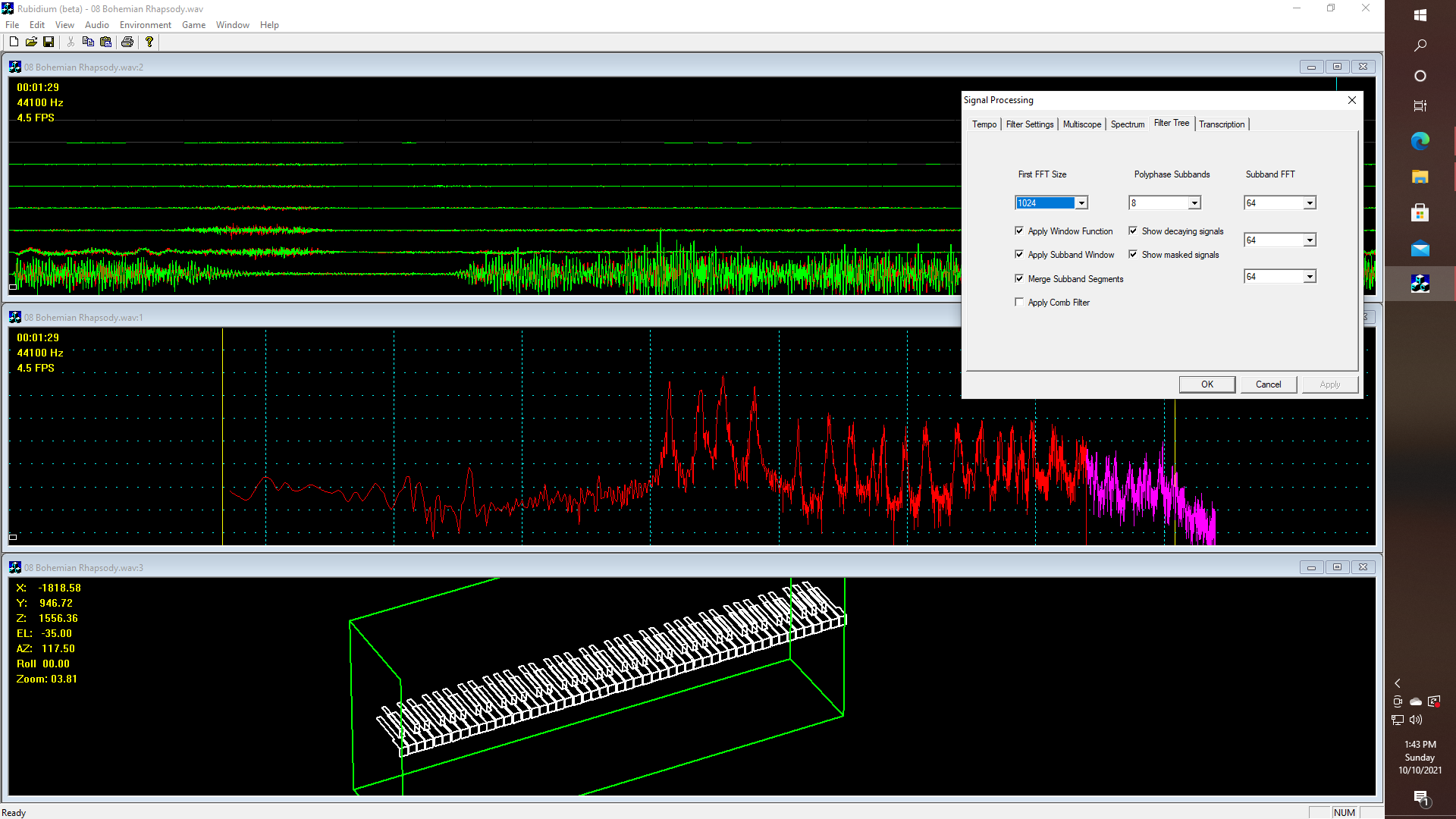O.K., as stated earlier, what I really have been wanting to do is a bunch of stuff like audio in and sheet music out, possibly by building a Euro-Rack compatible module, that uses the Parallax Propeller P2, and then add some features that allow for features like removing vocals from existing records or CDs, or providing effects like vocoding or pitch correction, as well as being usable as a tone generator, or a sequencer, or a drum machine, etc. It will of course also work as a platform where it can act as the brains of a robot for industrial or STEM applications. And maybe it will be able to help predict earthquakes.

Of course, if you want to include the kitchen sink in all of this, that is up to you. Maybe some kind of faucet control system for the DIY'er, but that is not something that is on my agenda. In an earlier project, I noted that it is possible to implement a polyphase filter tree in layers, similar to the way that MP3 does it, but by using regular FFT"s instead of discrete cosine transforms. This approach goes a LONG way toward solving the anti-aliasing and frequency resolution at low frequencies, where event detection and isolation can otherwise be very problematic. In this image, we are looking at an analysis frame of processed data from the song Bohemian Rhapsody by the band Queen. Here we can see the algorithm is quite good at sniffing out some issues with the presence of a 100Hz component associated with the second harmonic of the British power line frequency, down about 64db or so. How Interesting. Also, and even more important is the fact that we can separate out the individual fundamental frequencies which are being sung by the quartet at the beginning of the song, when they sing "Is this the real life, or is this just fantasy" and so on, as if in "barbershop style". The notes at this particular point are easy to pick out as being: D-F-G and B flat. Transcribing the entire song is left as an exercise for the reader - obviously for Copyright reasons.
Now as far as performing wave matching of seismic signals, and some of the other stuff is concerned, the synergy should be obvious, that is to say, with respect to the utility that comes with having the ability to do distributed processing of individually separated time-domain signals that can therefore be subjected to further analysis on separate cores, CPUs, or even across a network.
Likewise, perhaps the method of analyzing the time evolution of energy content per properly anti-aliased sub-band might turn out to be a useful method for working around the problem of tachyonic-quasi-crystals and the issues that arise because of any associated Lambda-shift that occurs when trying to detect the rate of change of frequency of potentially premonitory p-waves. Not to be confused with echo removal. That is another subject that might seem related to some, because of the issue of the effect of phase or what happens when there is missing phase information affecting the stereo image, that is when we are doing audio compression, de-compression, thinking about cocktail party effect, and so on.
 glgorman
glgorman
Discussions
Become a Hackaday.io Member
Create an account to leave a comment. Already have an account? Log In.